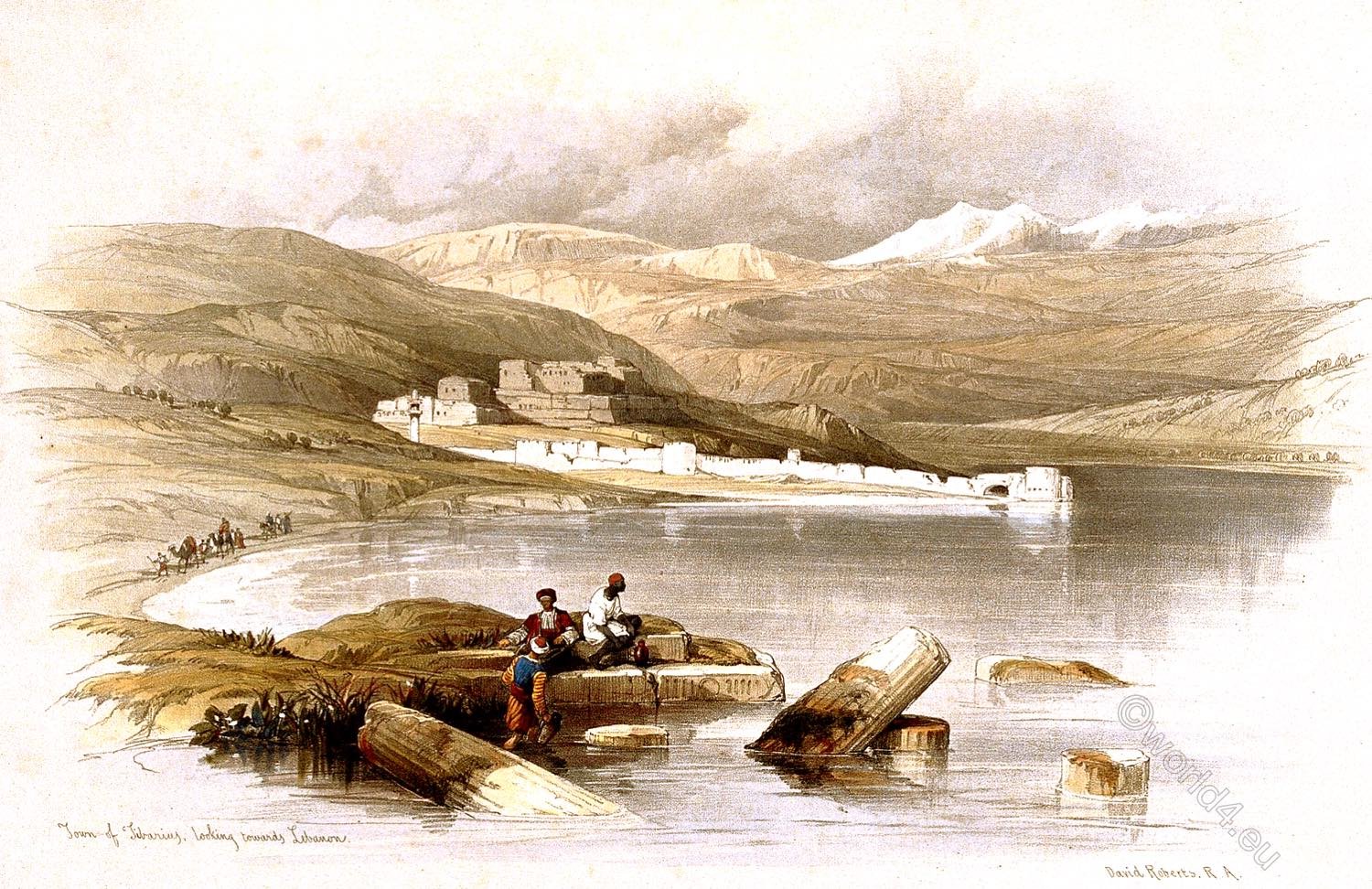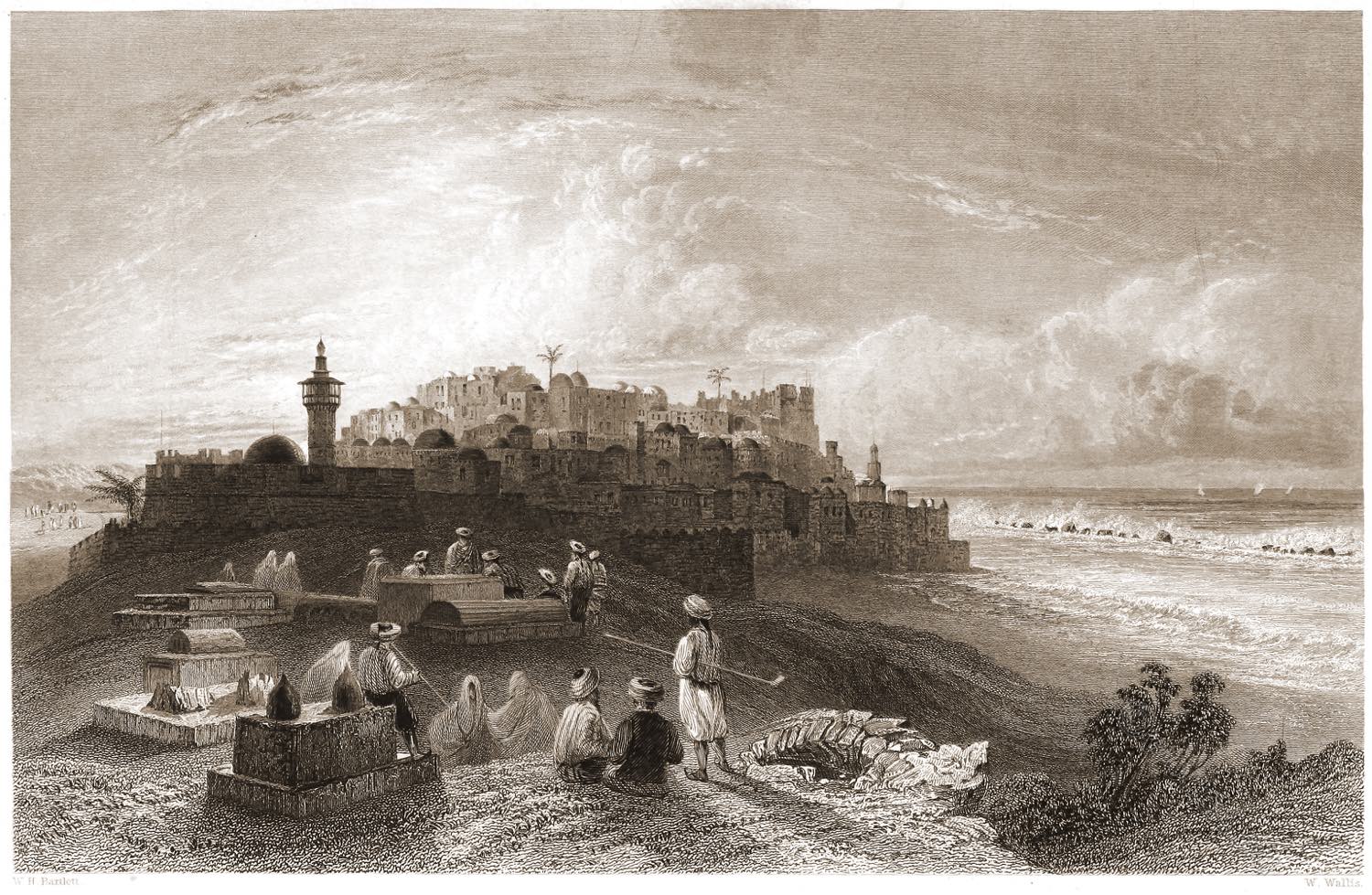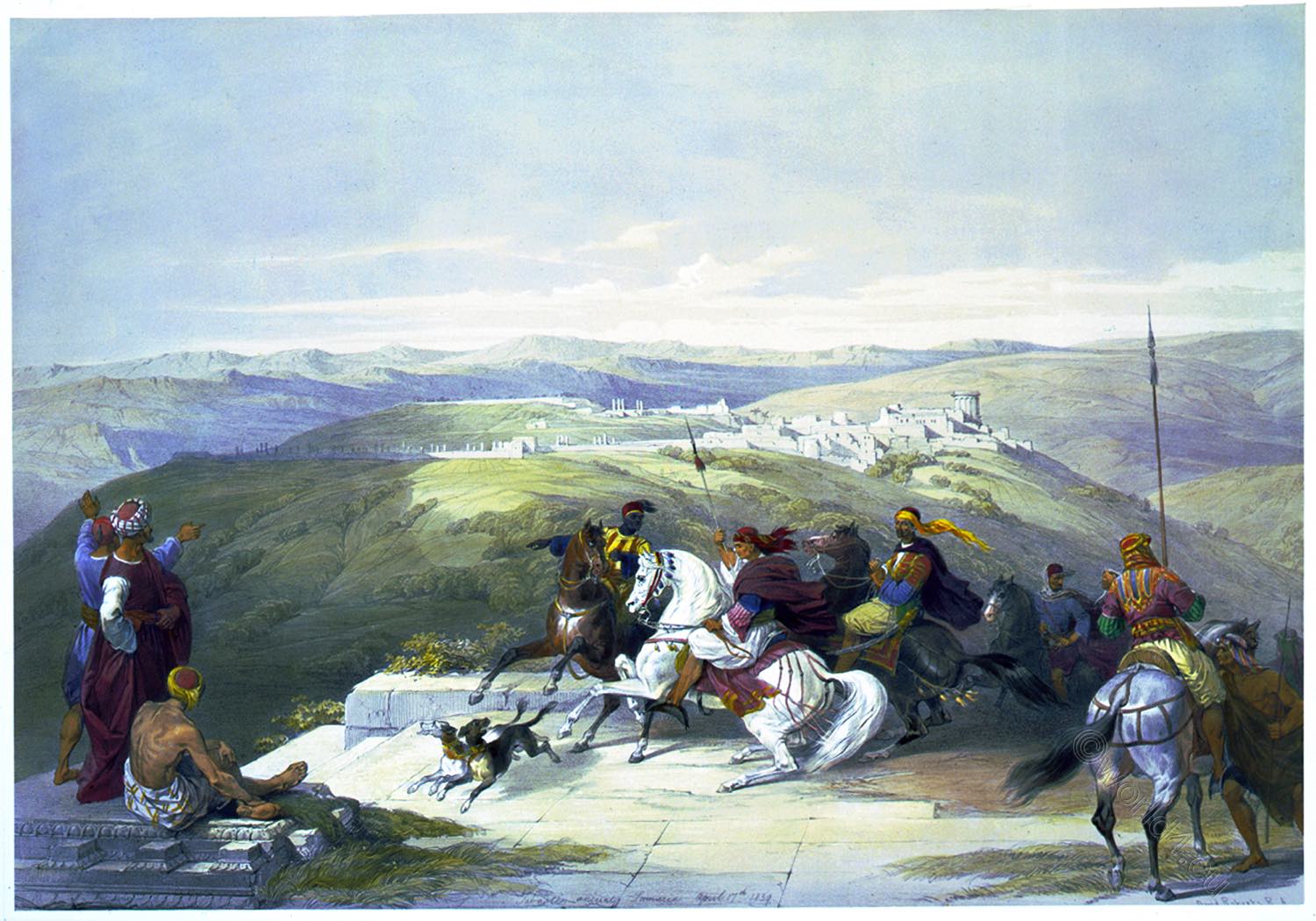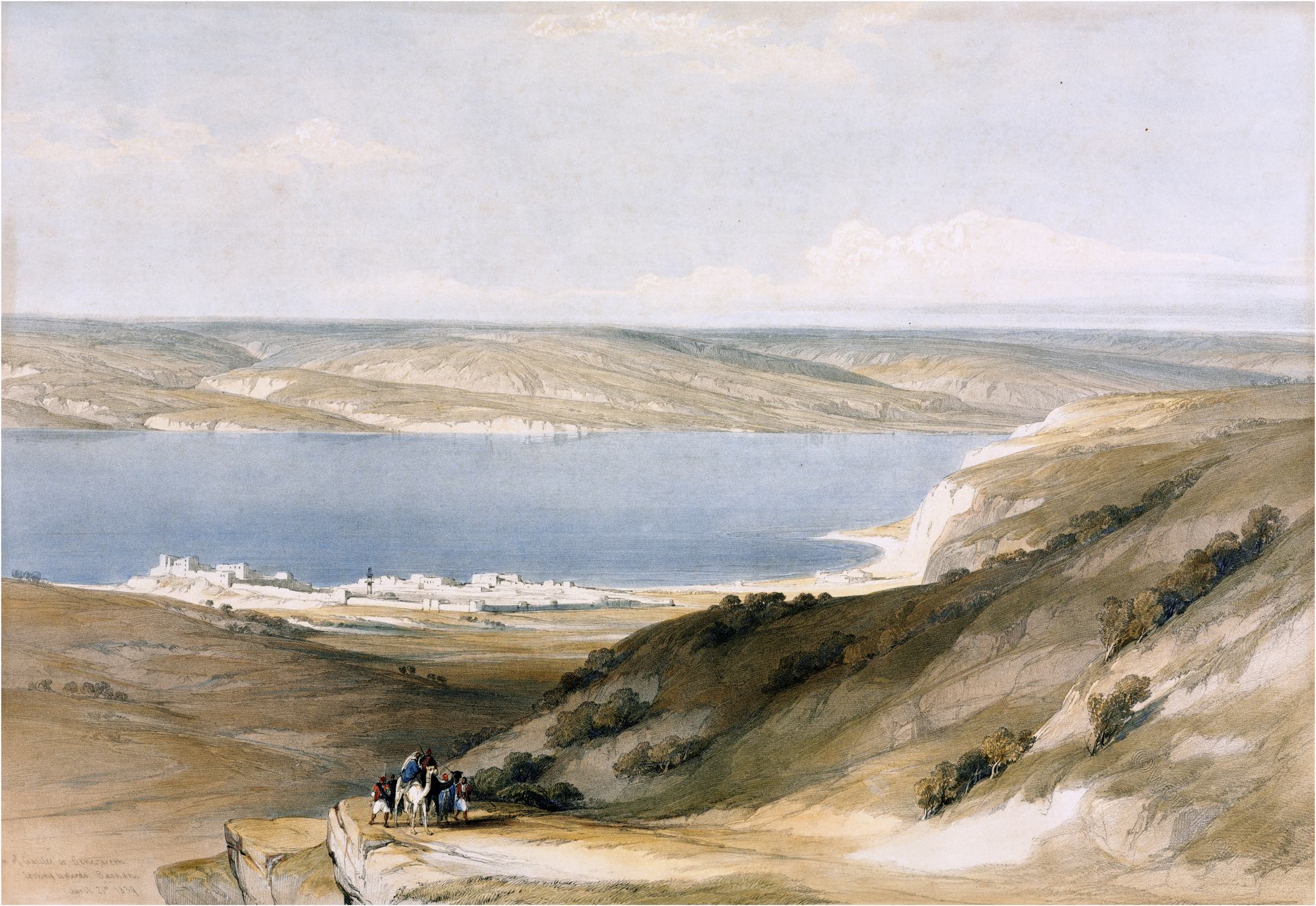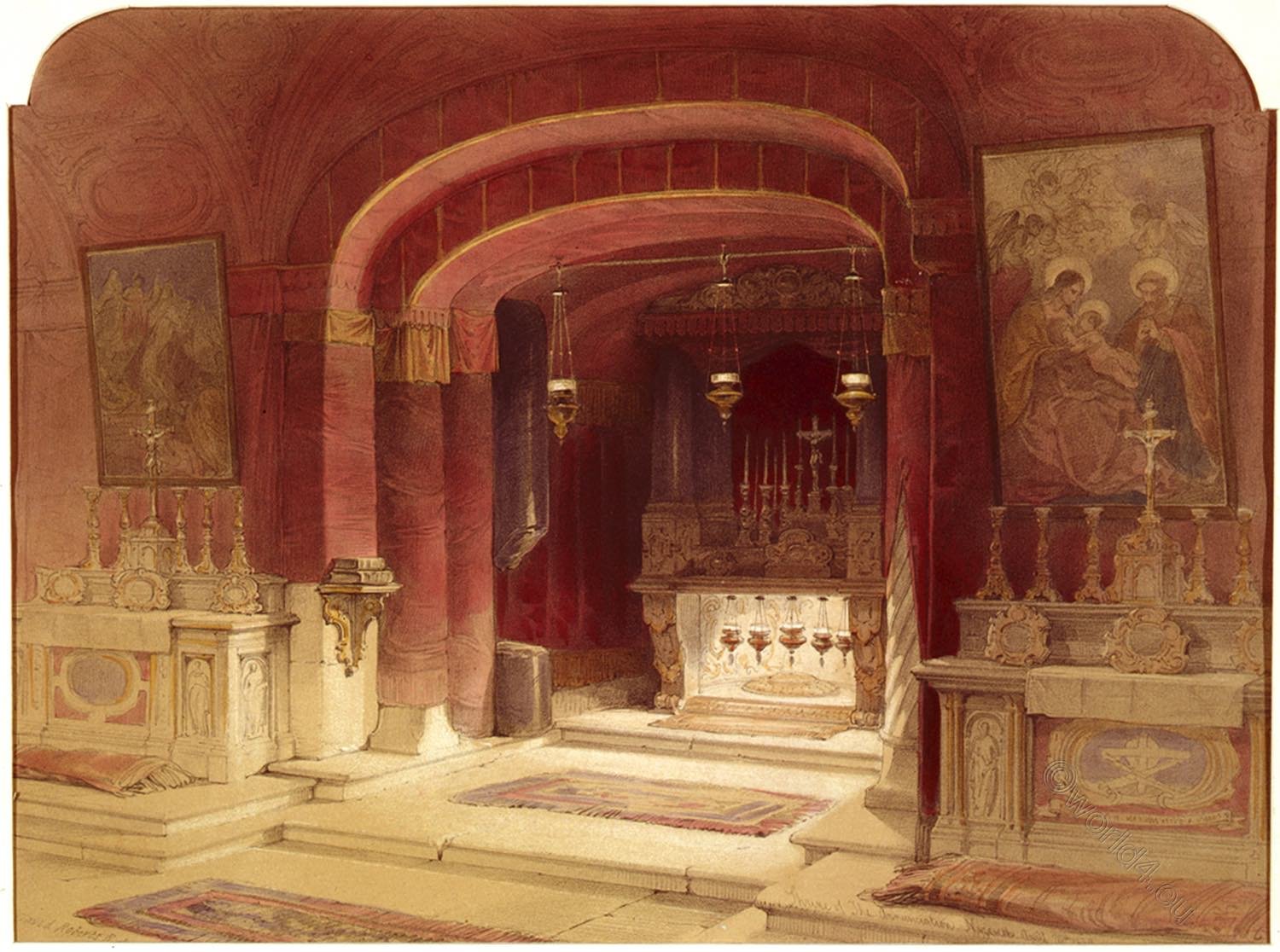
THE SHRINE OF THE ANNUNCIATION.
Beneath the Church of the Annunciation, and entered by a few steps descending in the rear of the High Altar, is a Grotto, with a marble Altar, lighted by silver lamps, the gifts of princes, and which are kept continually burning. The Altar is pronounced to stand on the exact spot where the Annunciation took place, according to the Latins, who establish their true place by a miracle.
In the Grotto are two pillars, said to have been erected by the Empress Helena, in consequence of a dream, in which the real places were revealed to her, where the Virgin stood, and where the angel gave the Salutation. One of these pillars has been broken, the act of a Turk, a Pasha, looking for treasure, who was instantly punished with blindness for the desecration.
But though the column is separated, about eighteen inches from the ground, the upper portion is still erect, miraculously sustained, as the Monks assert; but Dr. Clarke detected that the capital and shaft of grey granite are fastened to the roof of the Grotto; and, unluckily for the honest reputation of the pillar, he observed also, that the portion which rested on the ground is not granite, but Cipolino marble.
However, the celebrity of those pillars is so widely extended, that devotees from all parts of Galilee rub themselves reverentially against them, and believe the act a remedy for all diseases.
Tradition relates, that in this Grotto Mary lived, and over it, according to the same authority, once stood the Holy House, which, when in danger of Mohammedan spoliation, was carried through the air by angels, in 1291, to Dalmatia, thence in 1294 to Recanati in Italy, and finally, in 1295, was deposited at Loretto, where it is now so well known, as the Santa Casa. 1)
The Altar is raised under the half-natural, half-artificial, arch of the rock, against which the Holy House was supposed to lean. Behind this arch are two dark recesses, presumed to be primitive apartments. Why the Virgin should have lived underground, is not accounted for by the tradition.
1) Quaresm. ii. 834.
Source: The Holy Land, Syria, Idumea, Arabia, Egypt, & Nubia, by David Roberts, George Croly, William Brockedon. London: Lithographed, printed and published by Day & Son, lithographers to the Queen. Cate Street, Lincoln’s Inn Fields, 1855.
Continuing
Discover more from World4 Costume Culture History
Subscribe to get the latest posts sent to your email.

